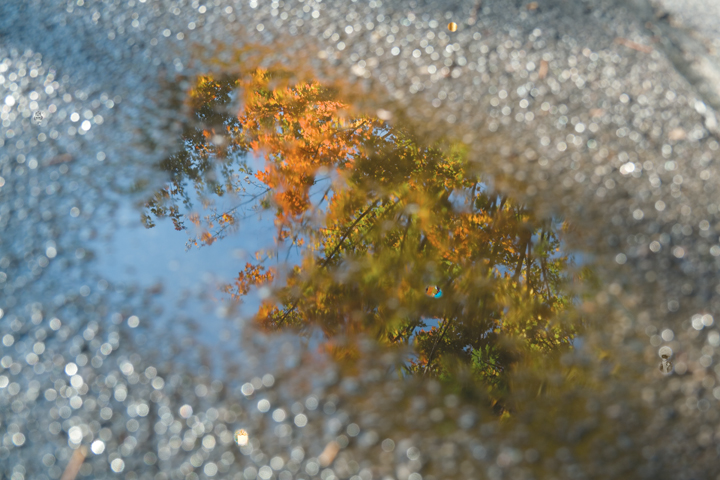[Summer 2008]
Patrick Mikhail Gallery, Ottawa,
January 9 – February 3, 2008
Over the years, Cheryl Pagurek’s art practice has gradually shifted from sculpture and installations to printed photographs and, finally, in the present exhibition, to the ultimate Ephemera of moving digital imagery. The more fleeting her work becomes, however, the more strongly it shows a desire to anchor familial memories, whether historical or personal, to a solid, tangible object or site, a stable place that would allow stories to evolve from somewhere, rather than shatter in the synchronic presence of fleeting images.
Anchoring the fragmented, dispersed imagery of Pagurek’s photographs and videos in this exhibition are images of her present home and street. They form a background, a projection screen, for a whirl of archival video footage and family snapshots. In light boxes and a video, Passage, the artist traces a play of light and shadows on the walls and floors of her house – inside and outside, from morning to night. She interweaves this footage with glimpses of her own family life and images of Jewish life from pre-war Europe and the immigrant ghettoes of America: portraits, children at play, marching troops, and horse-drawn wagons.
Similarly, every photograph in the series Reflections mirrors lampposts, trees, and houses on wet sidewalks and in puddles on Pagurek’s Ottawa street, which lends the fragments of old family photos that they incorporate a certain stability. Framed stills from the video, which round out the exhibition, accentuate this longing for stability, the wish to stop time and hold a moment in place. In Passage and Reflections, both Pagurek’s home imagery and the framing of the stills can be read as devices to create a real, concrete setting for dispersed, ephemeral imagery.
But the rippling puddles in Reflections make the street and its houses appear fragile, in danger of disappearing. And the interwoven family photographs appear upside down, which, at first sight, turns them into abstracted patterns. Passage is similarly unstable; the shadows do not show the objects that throw them, thereby giving the “ground” that is home a fleeting quality, as if anticipating its passing.
There is a sense, then, in Pagurek’s work that a stable reality, stable histories, will not be found, but can be created as imaginary constructs that have utopian1 values. As Andreas Huyssen writes in Twilight Memories, “In an age of an unlimited proliferation of images, discourses, simulacra, the search for the real itself has become utopian.”# Pagurek creates connections among the Jewish diaspora, the dispersal and lost identities of old family photographs, and a broader contemporary sense of unmooring in the unending flood of meaningless images. In the context of this exhibition, the photograph Reflection 8 brings to mind a story from the Kabbalah. In this creation story, God’s original universe is described as a shattered glass vessel forever in need of mending. The photograph shows the reflection of a tree in fall foliage – bright orange and ochre against a blue sky – surrounded by hundreds of perfect circles created by the refracting light on wet pavement. In five of those circles, Pagurek inserted fragments of family photos: the face and feet of unknown relatives, bits and pieces of her grandparents’ furniture, and a fragment of a photo of herself as a teenager.
If there is a positive outcome to the Jewish myth, in that the original disaster produced opportunities for humanity to be creative and caring toward the world, perhaps the splintering of photography into the endless and ethereal synchronic juxtaposition of images could produce a similar utopian desire to set things right. Pagurek’s exhibition provides a site in which to explore a parallel between the splintered universe of Jewish mythology, and the shattering effects of unlimited reproduction. The Jewish tradition of constructing unity and identity in a shattered world pervades the work with a sense of hope.
Pagurek no longer counters the loss of materiality by using concrete materials in sculptural installations; instead, she works through the technological realities of contemporary life and attempts to provide a sense of the real, even within the material limitations of lens-based art. Her work provides hope that a shattered universe can be mended; she makes a beginning by artfully reassembling people’s lives, piecing places to memories, providing homes and stories where none remained.
Petra Halkes is an artist and writer. Her book Aspiring to the Landscape was published by the University of Toronto Press in 2006.

